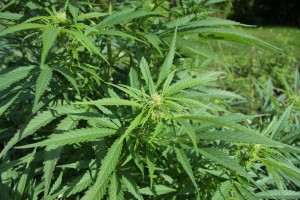
On the first part of the series, we tackled the differences between CBD and THC, and which one of them does harm towards the body more than it does good. And we were able to find out that CBD is the good medicine and THC is the potentially bad.
Oh, you’ve read it already? Lovely! Then let’s begin.
Here, we will focus more on CBD and cancer and how it works.
Unlike synthetic medications, CBD works WITH the body, and not against it. As mentioned previously, the cannabis plant’s naturally occurring compounds are called cannabinoids. CBD is a plant constituent found with many other constituents inside the plant just like all other herbal medicines. This is what makes herbs like garlic, tumeric and St Mary’s Thistle so unique and have their medicinal quality.
The human body has parts that function specifically for cannabinoids. They are called cannabinoid receptor sites, making up the endocannabinoid system. This is responsible for the many physiological and mental processes happening inside the body. It includes a number of cell receptors in the brain and other organs.
There are two types of receptors in the body; The CB1 and the CB2 receptors. The CB1 receptors are found in the liver, kidneys, lungs, and mostly in the brain. The CB2 can be found in the immune system.
Cannabinoid substances actually merge with these receptors in order to coordinate the body’s different functions, causing various effects, such as regulating mood and concentration, causing euphoric and “high” states. Some cannabinoids, including CBD, have fewer direct effects on the endocannabinoid system.
Cannabinoids that are also produced internally – the endocannabinoids – by nature, regulate several functions within the body. But when cannabinoids from external sources, phytocannabinoids, in particular, it is rather difficult to differentiate which ones have clinically desirable, and which ones have harmful effects. The reason for this is that cannabinoid receptors send a variety of signals that usually mixes with the endocannabinoids effects, that it’s tough to tell them apart.
Adding the fact that some of these CBs interact synergistically, thus having varying effects that are not seen when used individually. An example is CBDs ability to inhibit THC’s psychotropic effects when taken together.
CBD is unique. In that, it doesn’t directly interact with the cell receptors. Why? Because it doesn’t bind with CB1 and CB2 receptors but rather keeps these receptors functioning at their optimal capacity, helping the function of all other cannabinoids, including the endocannabinoids. CBD helps the cannabinoids to be better absorbed, and stop the effects of whatever is making the receptors not function properly and effectively.
And since it boosts the receptors’ functions, it consequently creates soothing and relaxing effects.
Another misconception about marijuana is that it’s the same as hemp. Farmed medicinal hemp is produced by cannabis sativa strains that have been artificially bred to grow taller and sturdier, and produce minimal levels of THC. The purpose of this is so that the plant can be used to produce hemp oil, wax, resin, rope, hemp seed protein powder, cloth, and a lot more. Hemp is exclusively made from cannabis sativa. Medical marijuana is from different strains that have been selectively bred to increase and maximise the THC cannabinoids concentration. The two plants are different in size, growth and constituent makeup. One is more for recreational psychoactive spiritual uses and one is a medicine.
